Are you a beer lover baffled by the intricate descriptions that connoisseurs use to portray their favourite brews? Believe it or not, tasting and describing beer is an art – one that’s easier learned than you might think.
In this guide, we’ll reveal how to transform your casual sips into knowledgeable gulps, unravelling the complex layers of aroma, flavour and mouthfeel with each pour. Ready for a tasty adventure? Let’s dive in!
Key Takeaways
- Beer tasting is an art that can be learned by understanding the power of our chemosenses, language, and memory.
- Our senses of smell and taste work together to help us evaluate beer’s different flavors and aromas.
- Paying attention to the appearance, aroma, flavor, mouthfeel, finish, and aftertaste can enhance our appreciation of beer.
- By using tasting notes and evaluating hops, small breweries can improve the quality and flavor profiles of their beers.
Understanding the Senses in Beer Tasting

The chemosenses, language, and memory play a powerful role in beer tasting as the physiology and psychology of tasting converge to enhance our sensory experience.
The Power of Chemosenses, Language, and Memory
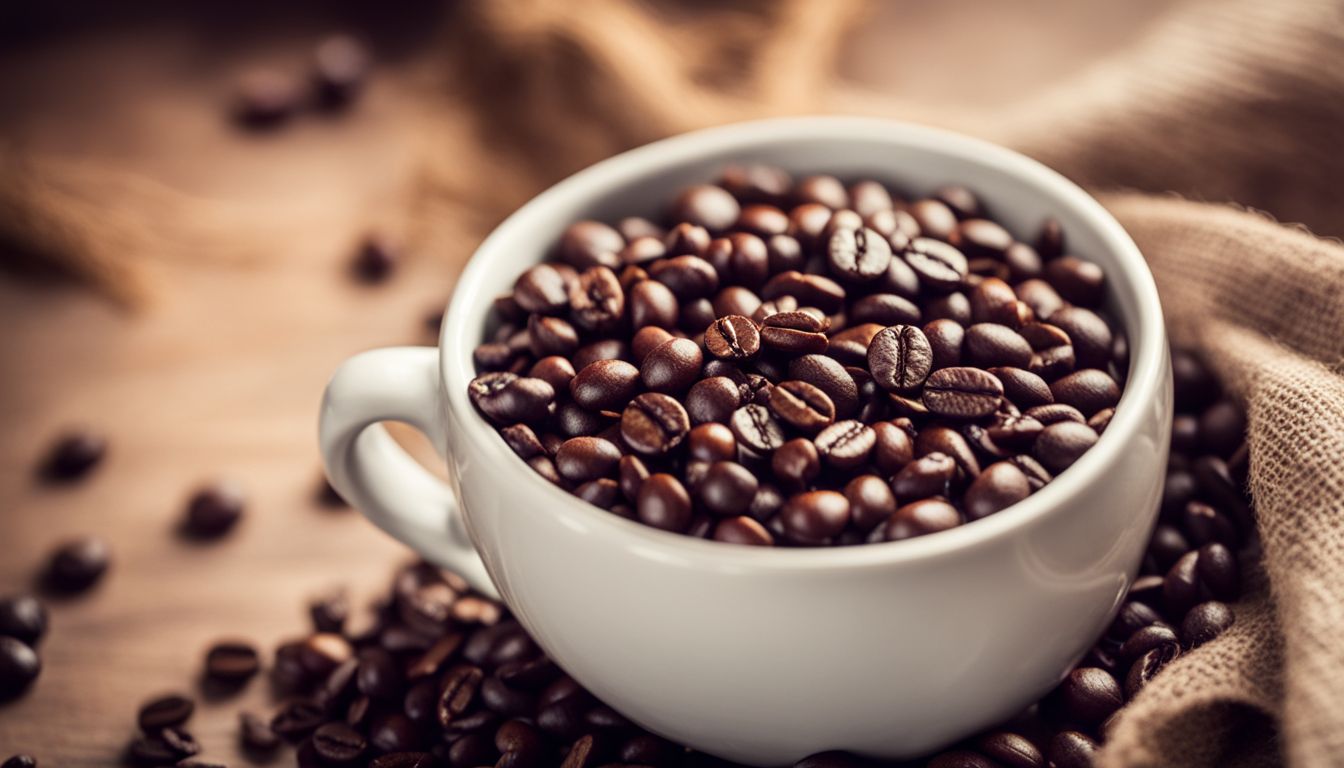
Tasting beer uses chemosenses. These are your senses of taste and smell. When you sip beer, these senses work together. They send messages to your brain about what you’re tasting and smelling.
You also use words to describe this experience. This is the part language plays in tasting beer. Memory is also powerful in this art form. It helps recall tastes and smells from past beers you’ve tried.
This can help compare different types of beers or even find a new favourite one! So, when you taste beer next time, think about how much your chemosenses, language, and memory are helping out.
The Physiology and Psychology of Tasting

Beer tasting is not just about the flavors and aromas that we experience. It also involves the physiology and psychology of our senses. When we taste beer, our chemosenses come into play.
These include our sense of smell, taste, and even touch. They work together to help us interpret the different characteristics of the beer.
Our sense of smell plays a superpower role in beer tasting. It helps us pick up on various aromas present in the beer, giving us important clues about its flavor profile. Additionally, our trigeminal system, which is responsible for sensations like mouthfeel, also contributes to our overall experience when tasting beer.
On a psychological level, memory comes into play during beer tasting as well. Our previous experiences with certain flavors or styles of beers can influence how we perceive new ones.
This is why it’s important to approach each new tasting with an open mind and without preconceived notions.
The Superpower of Smell
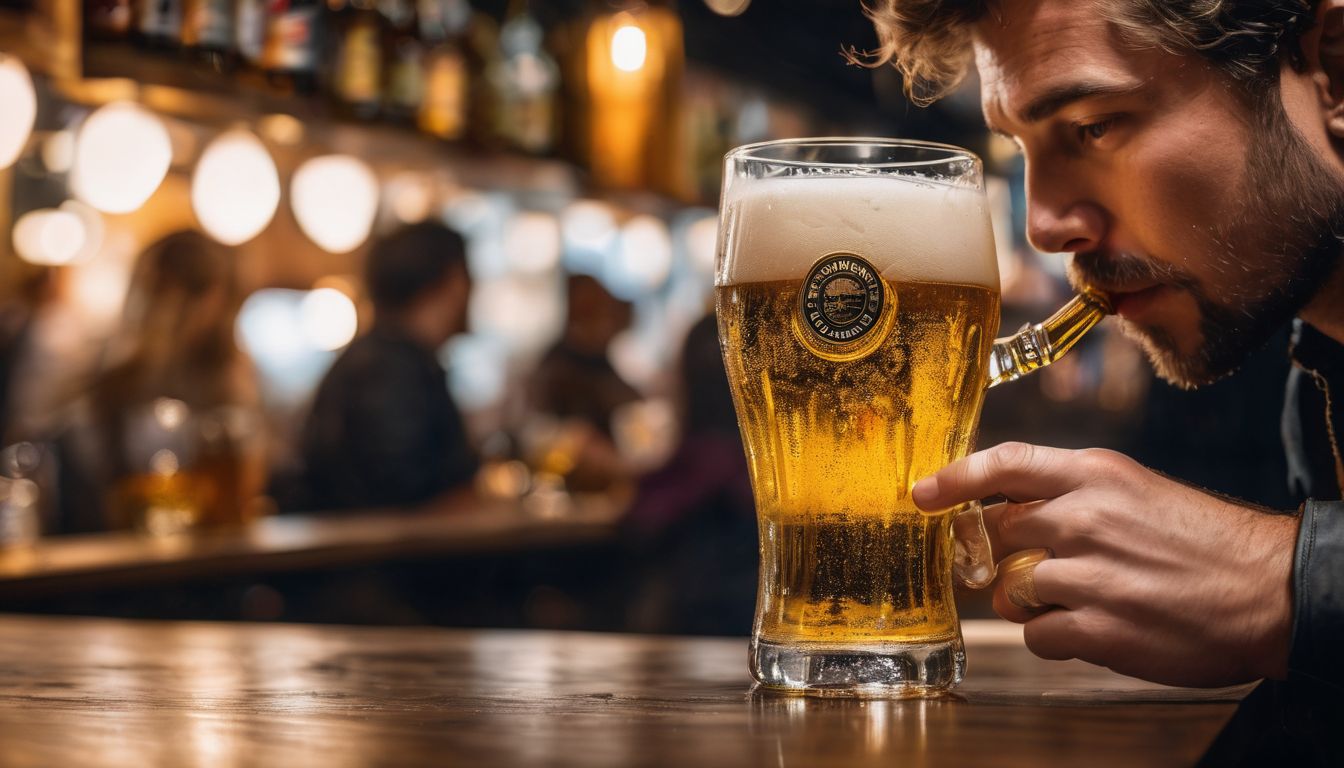
One of the most powerful senses when it comes to beer tasting is smell. Our sense of smell has a superpower-like ability to detect different aromas in beer, and this plays a crucial role in evaluating and describing the beverage.
By using our nose, we can pick up on subtle notes like citrus, caramel, or even grassy hops. Smell helps us identify the complexities and nuances in beer, adding another layer to our sensory experience.
It’s important to pay attention to this superpower during beer tasting as it can greatly enhance our understanding and appreciation of different beer styles.
Convergence of the Chemosenses

When it comes to beer tasting, the convergence of our senses plays a crucial role. Our chemosenses, such as smell and taste, work together to help us evaluate and appreciate different flavors and aromas in beer.
The aroma of beer is especially important because it contributes greatly to our overall perception of flavor. The ability to distinguish various aromas allows us to identify key characteristics in different styles of beer.
Additionally, our sense of taste helps us experience the unique flavors that each beer offers. By understanding these sensory interactions, we can enhance our appreciation and evaluation of the beers we taste.
The Trigeminal System and Mouthfeel
The trigeminal system plays a role in our perception of mouthfeel when tasting beer. This intricate system includes nerves that transmit information from our face, mouth, and throat to the brain.
When we drink beer, it activates these nerves, resulting in sensations like carbonation tickling the tongue or the warmth of alcohol. The mouthfeel of beer refers to its texture and body, which can range from light and watery to creamy and full-bodied.
It’s an important aspect to consider when evaluating and describing a beer’s overall taste experience.
Evaluating Beer: Sight, Aroma, and Flavour

When evaluating beer, it is important to appreciate the appearance, unlock the aromas, and analyze the flavors and taste profile.
Appreciating the Appearance of Beer
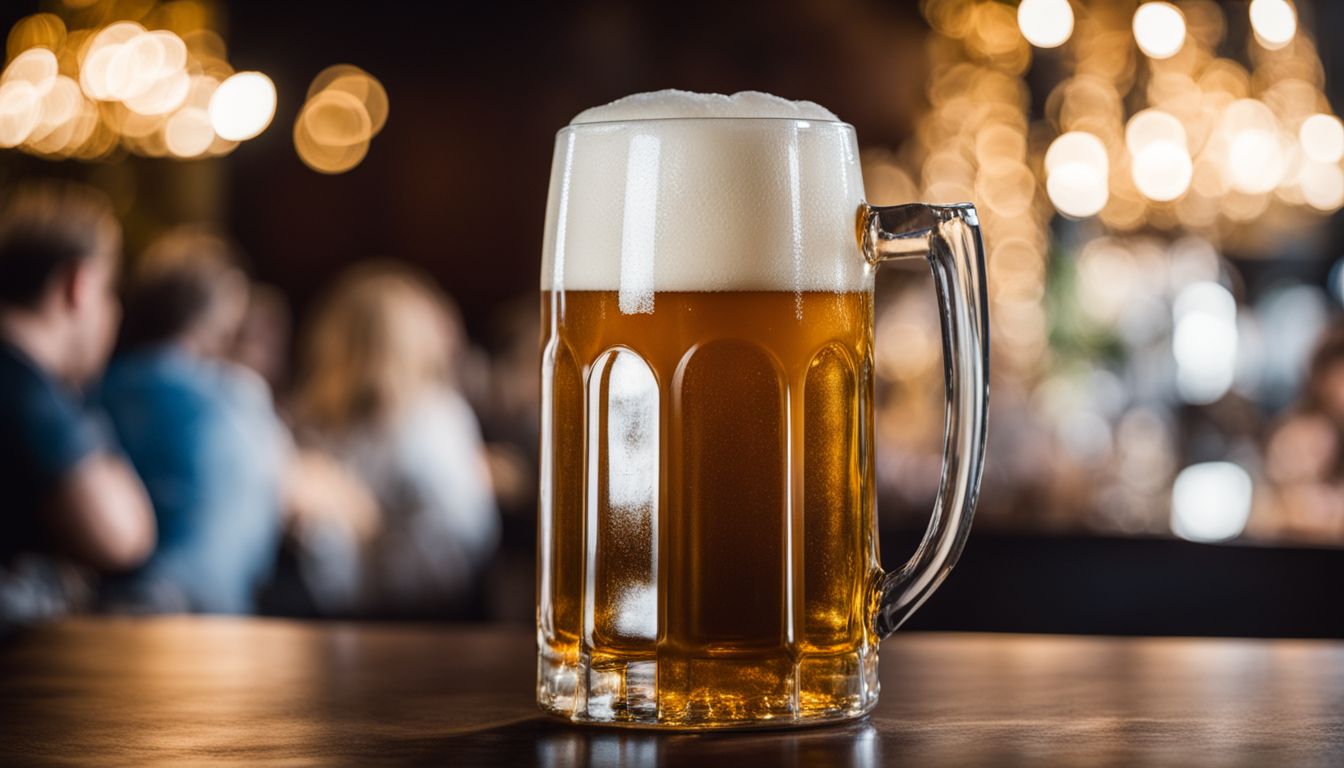
When it comes to beer tasting, the appearance of the beer is the first thing we notice. It can tell us a lot about what to expect in terms of flavor and quality. The color of the beer can range from light straw to dark amber or even pitch black, and it is determined by the malt used during brewing.
Additionally, clarity is also important – a clear beer indicates good filtration and brewing techniques. We can also look at the head or foam on top of the beer, which should be creamy and persistent for certain styles like stouts or lagers.
A frothy head with lacing that sticks to the glass as you drink signifies a well-crafted brew. So, next time you have a pint in front of you, take a moment to appreciate its appearance before diving into all those delicious flavors!
Unlocking the Aromas in Beer
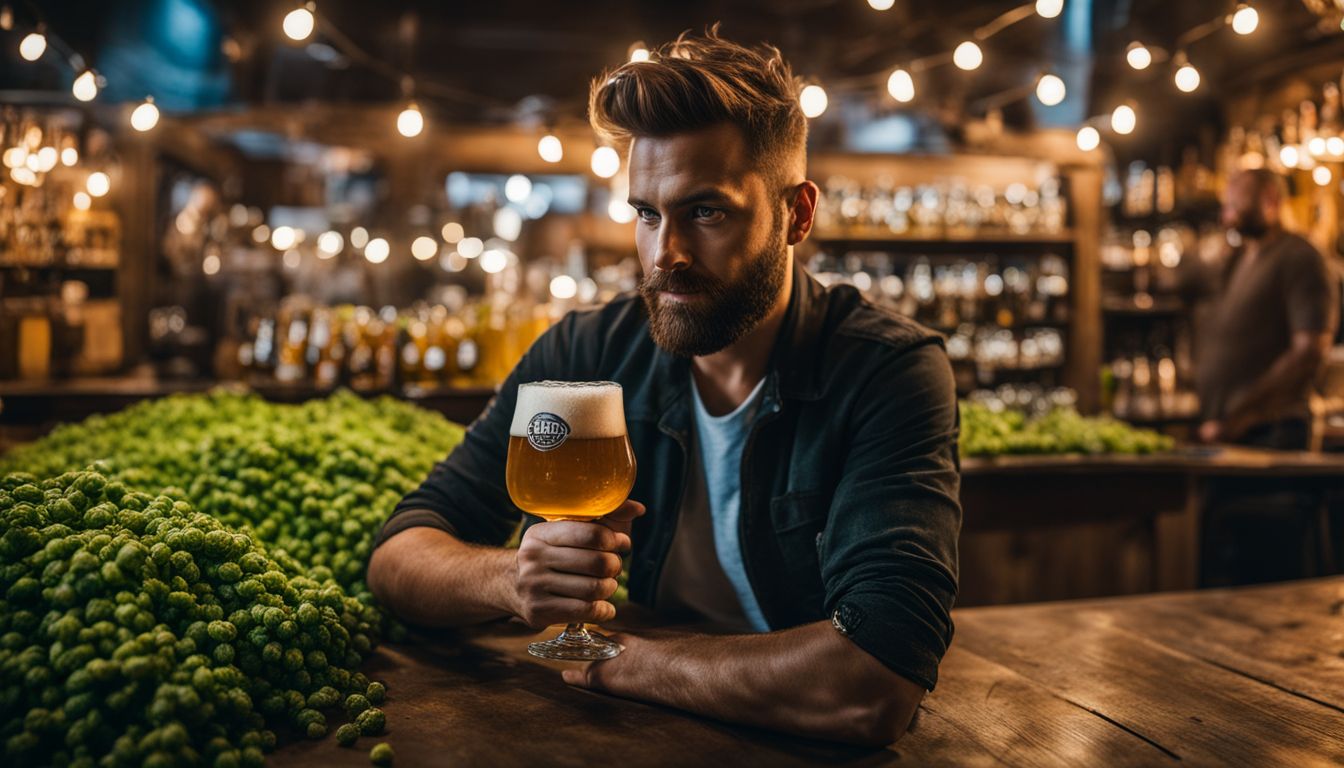
Let’s explore the fascinating world of unlocking the aromas in beer. Have you ever wondered why beer smells the way it does? Well, it all comes down to the different ingredients and processes involved in brewing.
The hops used in brewing contribute a range of aromas, from floral and fruity to herbal and piney. Malts also play a role by adding sweet, caramel, or roasty scents. And let’s not forget about yeast, which can give off spicy or fruity notes.
By learning to recognize these various aromas, you’ll be able to appreciate the full spectrum of flavors that beer has to offer. So next time you take a sip of your favorite brew, take a moment to inhale deeply and see if you can identify any of these delightful scents!
Analyzing the Flavours and Taste Profile
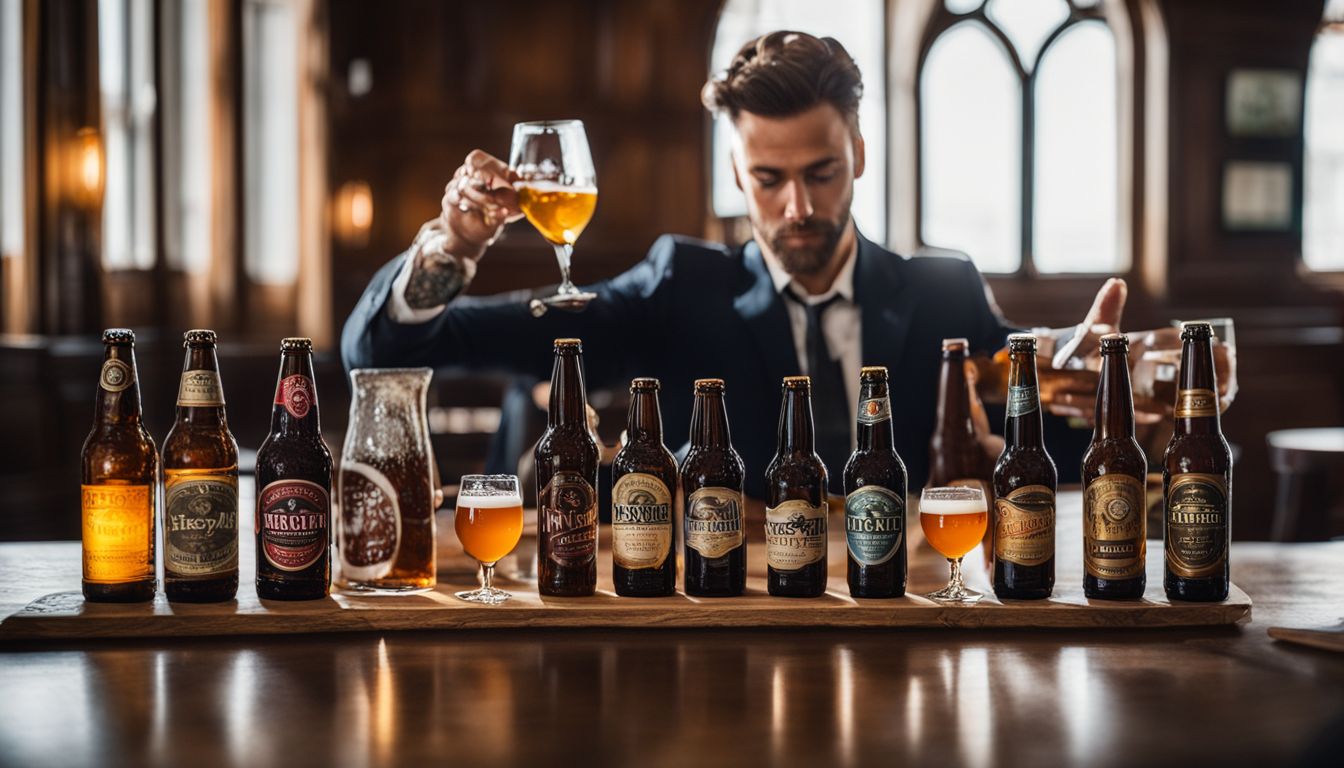
When analyzing the flavors and taste profile of beer, it’s important to pay attention to the different characteristics that contribute to its overall taste. Look out for notes of sweetness, bitterness, acidity, and even hints of fruit or spice.
Take note of how these flavors interact with each other and how they evolve as you continue tasting. Understanding the flavor profile can help you appreciate the complexity and uniqueness of different beers.
Use a beer descriptors list or beer styles as reference points to help you identify specific flavors in the beer. Remember, everyone’s palate is different, so trust your own taste buds when evaluating the flavors in a beer.
Mouthfeel and Finish in Beer Tasting

Understanding the Importance of Mouthfeel and how it contributes to the overall beer tasting experience, as well as assessing the Finish and Aftertaste for a comprehensive evaluation.
Understanding the Importance of Mouthfeel
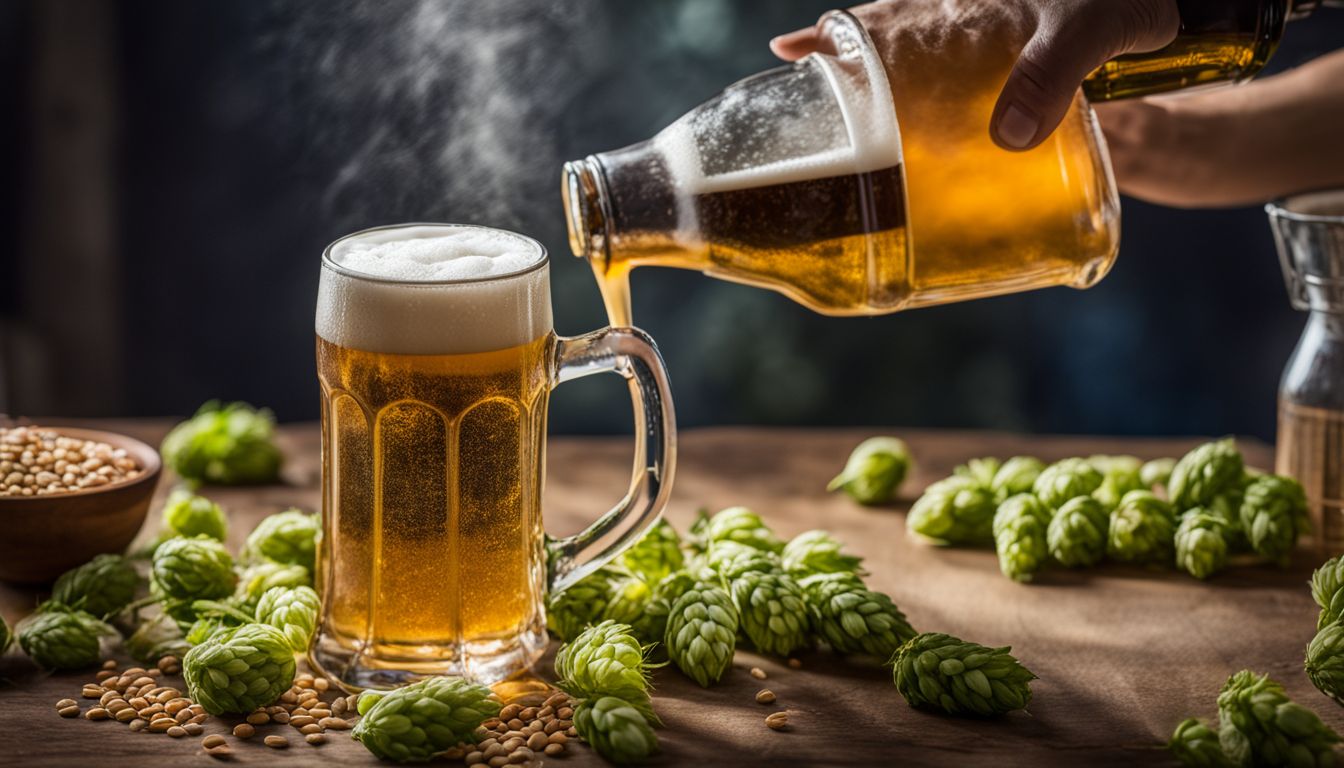
Mouthfeel is a crucial aspect of beer tasting. It refers to the way beer feels in your mouth, including its texture, body, and carbonation. When you take a sip of beer, it’s not just about the taste and aroma, but also how it feels on your tongue.
The mouthfeel can vary from light and crisp to rich and velvety, depending on factors like the ingredients used and the brewing process. It adds another layer of complexity to your overall experience of enjoying a good brew.
So next time you’re sipping on your favorite beer, pay attention to how it feels in your mouth!
Assessing the Finish and Aftertaste

When evaluating beer, it’s important to pay attention to the finish and aftertaste. The finish refers to the flavors that linger after you’ve swallowed the beer, while the aftertaste is the impression it leaves in your mouth.
This can range from a clean, crisp finish to a lingering bitterness or sweetness. It’s helpful to take note of how long these flavors last and whether they’re pleasant or not. A good beer will have a balanced and enjoyable finish that complements its overall flavor profile.
Remember, everyone’s taste preferences are different, so trust your own palate when assessing the finish and aftertaste of a beer.
Beer Evaluation in Practice
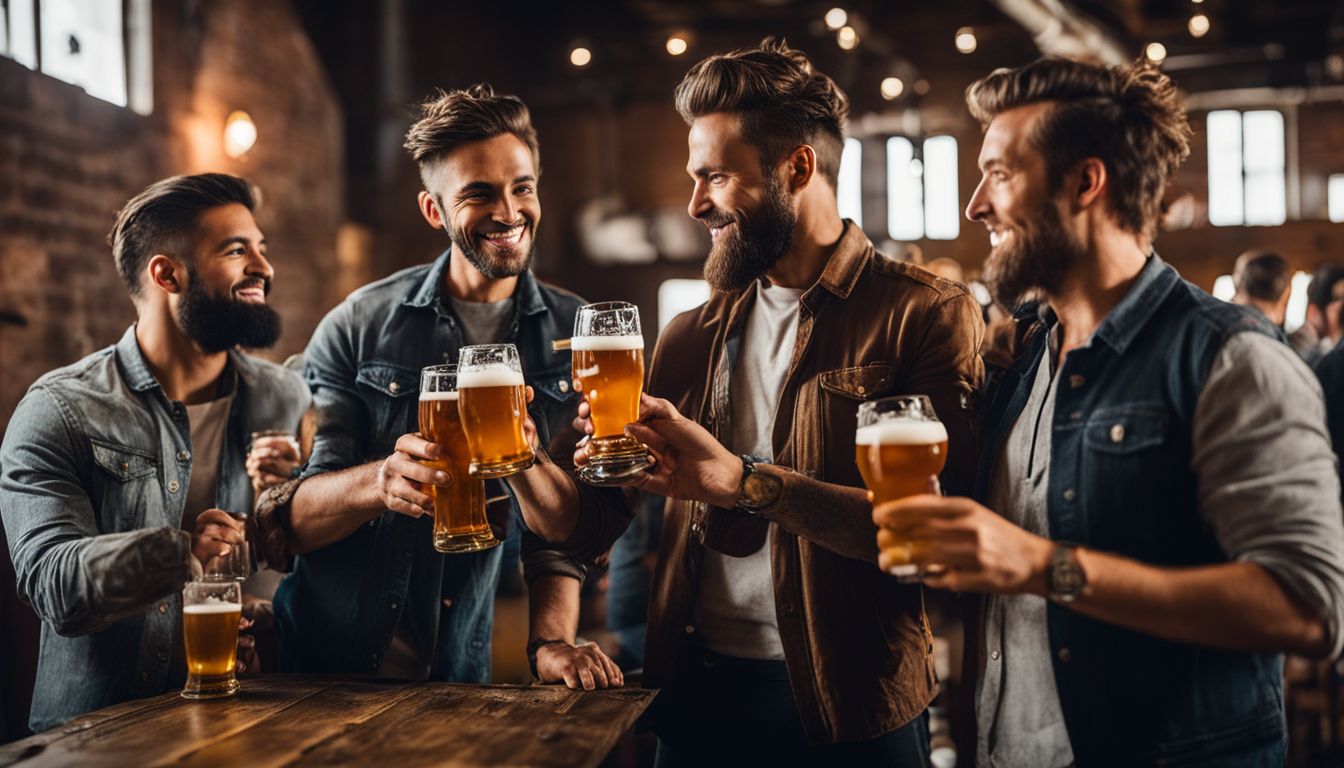
Defining Your Sensory Process with Tasting Notes; Evaluating Hops for Small Breweries; Establishing a Sensory Panel for Brewing Quality.
Defining Your Sensory Process with Tasting Notes
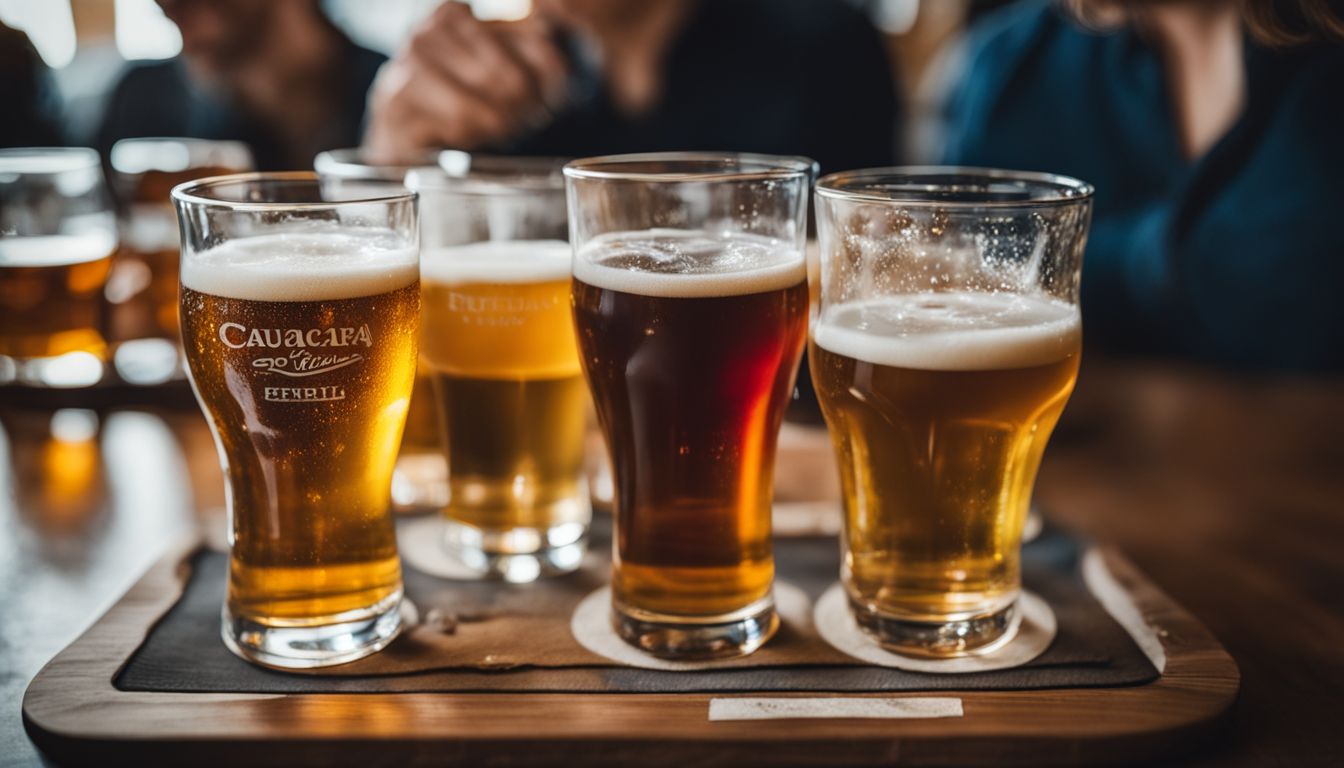
To become an expert in beer tasting, you need to define your sensory process with tasting notes. Here are some tips to help you do that:
- Use a beer tasting sheet: Keep track of your observations by using a beer tasting sheet. This will help you record important details about the appearance, aroma, flavor, and mouthfeel of the beer.
- Take detailed notes: When tasting a beer, focus on its characteristics and note down what you perceive. Pay attention to the color, clarity, and foam of the beer. Describe the aroma using terms like fruity, spicy, or malty. Analyze the flavor and identify any specific tastes such as caramel, citrus, or roasted malt.
- Consider the mouthfeel: Evaluate how the beer feels in your mouth. Is it smooth or carbonated? Is it light-bodied or full-bodied? Note any sensations like creaminess or astringency.
- Compare and contrast: As you taste different beers, compare them against each other to understand their similarities and differences. This will help you develop a better understanding of various beer styles and flavors.
- Use descriptive language: Improve your ability to describe beer by expanding your vocabulary. Familiarize yourself with common descriptors used in beer tasting, such as hoppy, bitter, sweet, or dry.
Evaluating Hops for Small Breweries
Small breweries can evaluate hops to enhance the flavor of their beer. Here’s how:
- Understanding hop varieties: Different hop varieties have unique flavors and aromas. Knowing the characteristics of each variety helps brewers choose the right hops for their beer.
- Assessing aroma: Smelling the hops before using them is essential. Brewers should note whether they have a citrusy, floral, spicy, or earthy aroma, as this will impact the beer’s overall fragrance.
- Analyzing bitterness: Hops contribute to the bitterness in beer. Brewers can evaluate the hops’ alpha acids content to determine how bitter their beer will be.
- Considering flavor profiles: Hops also add flavors such as fruity, herbal, or piney notes to beer. Evaluating these flavors helps brewers create a well-balanced and enjoyable taste experience.
- Experimenting with hop combinations: Small breweries can try different combinations of hop varieties to create unique flavor profiles for their beers.
- Consistency and quality control: It’s important for small breweries to consistently evaluate hops to ensure that their beers maintain a high level of quality and taste over time.
Establishing a Sensory Panel for Brewing Quality
To ensure the quality of beer, breweries can establish a sensory panel. Here’s how:
- Recruit individuals with a diverse range of palates and tasting abilities.
- Train panel members on beer evaluation techniques and descriptors.
- Provide consistent sensory training to maintain panel proficiency.
- Conduct regular sensory evaluations of beer samples for consistency and quality control.
- Use blind tasting methods to eliminate bias and ensure unbiased evaluations.
- Document and analyze sensory data to identify any issues or areas for improvement.
- Incorporate consumer feedback into the sensory evaluation process for a well – rounded perspective.
- Continuously educate the panel on emerging trends in beer flavors and styles.
- Share findings and collaborate with other breweries to promote knowledge sharing in the industry.
Conclusion: The Journey to Becoming a Beer Tasting Expert

Congratulations on embarking on the journey to become a beer tasting expert! With the complete guide provided in this article, you can master the art of evaluating and describing beer.
By understanding your senses, appreciating appearances, unlocking aromas, analyzing flavors, assessing mouthfeel, and using a sensory process with tasting notes, you’ll develop the skills needed to become a connoisseur.
Remember to practice sampling methods and familiarize yourself with different characteristics of beer styles. So grab your favorite brew and start your adventure into the world of beer tasting today!
FAQs
1. What is beer tasting?
Beer tasting is the process of evaluating and analyzing different flavors, aromas, and characteristics of beer to appreciate its quality and craftsmanship.
2. How do I evaluate and describe beer during a tasting?
To evaluate and describe beer during a tasting, pay attention to its appearance (color, clarity), aroma (smell), flavor (taste), mouthfeel (texture), and overall impression. Use descriptive words like bitter, malty, fruity, or smooth to capture your experience.
3. Can anyone learn how to master the art of beer tasting?
Yes, anyone can learn how to master the art of beer tasting with practice and curiosity. Developing your palate by trying different types of beers and paying attention to their characteristics will enhance your ability to evaluate and describe them.
4. Are there any specific techniques or tools for mastering the art of beer tasting?
While there are no strict techniques or tools required for mastering the art of beer tasting, using a clean glassware that allows you to see the color clearly can be helpful. Also taking small sips, letting it linger in your mouth before swallowing will allow you to fully taste all aspects of the beer’s profile
